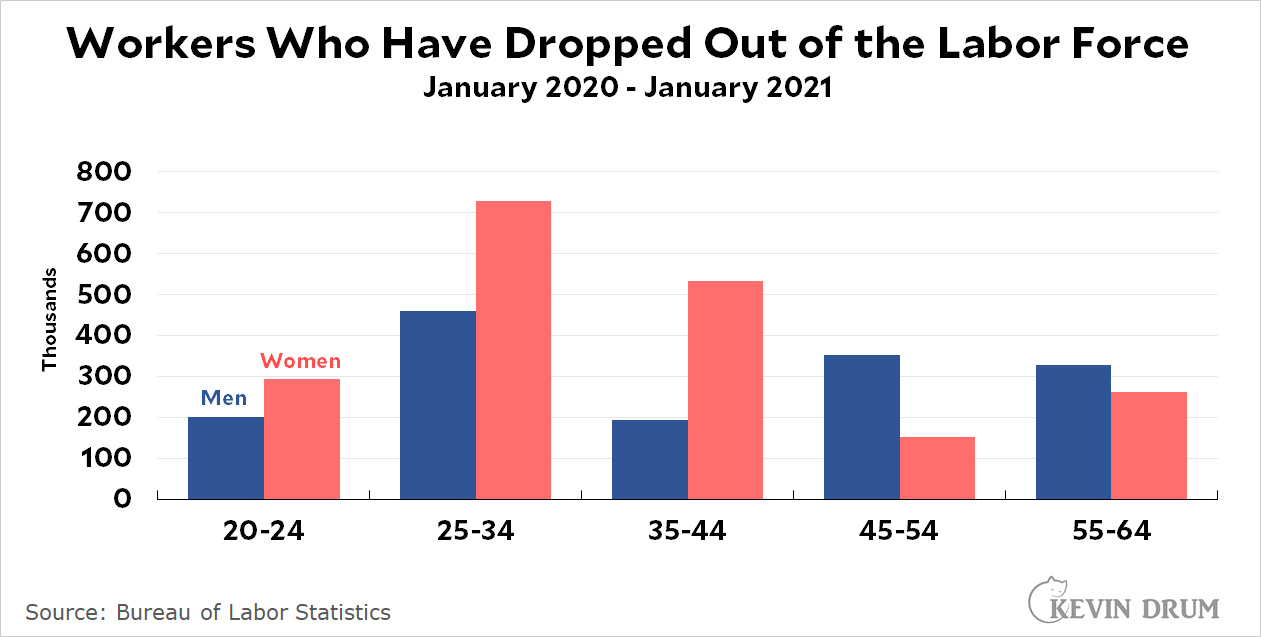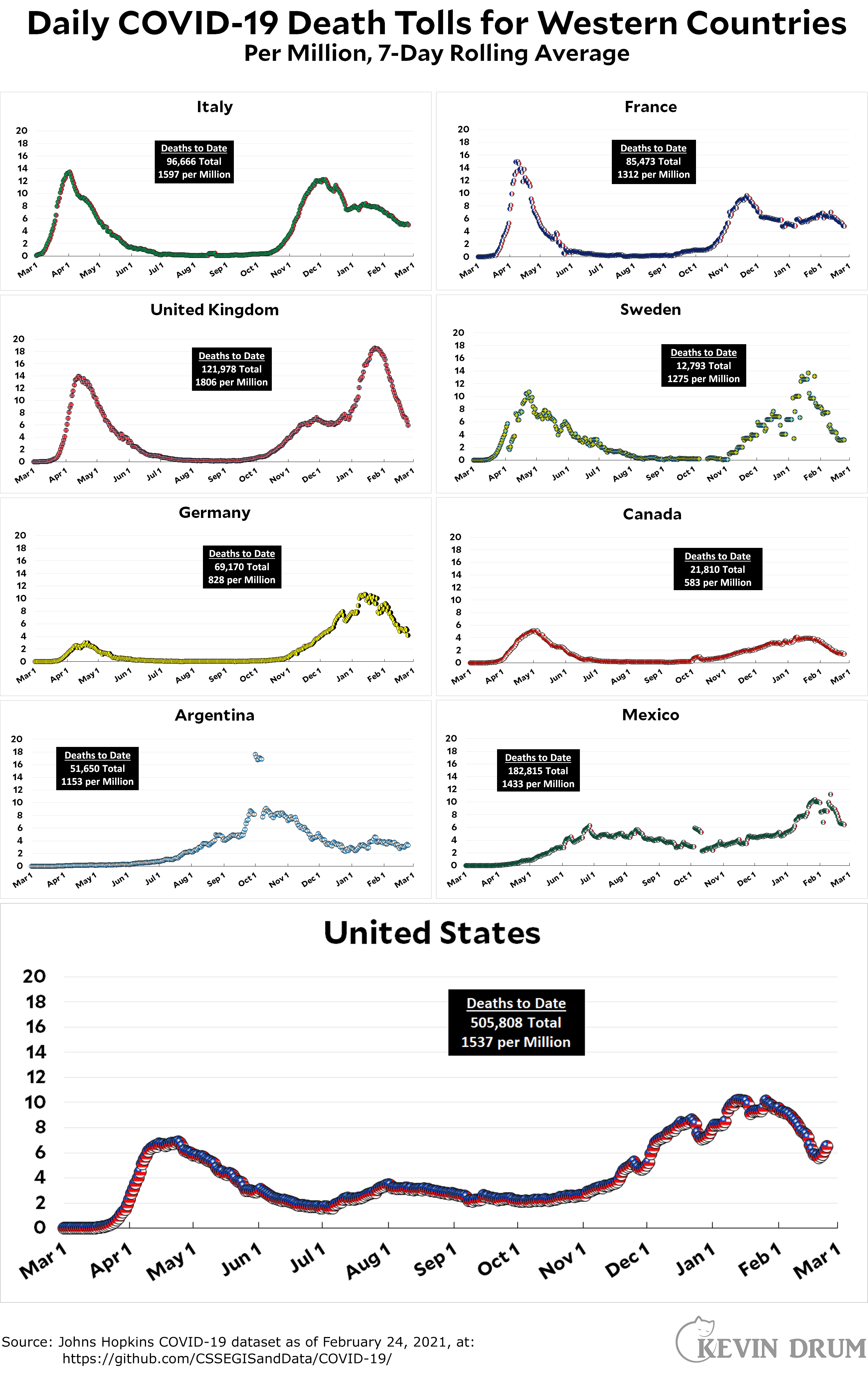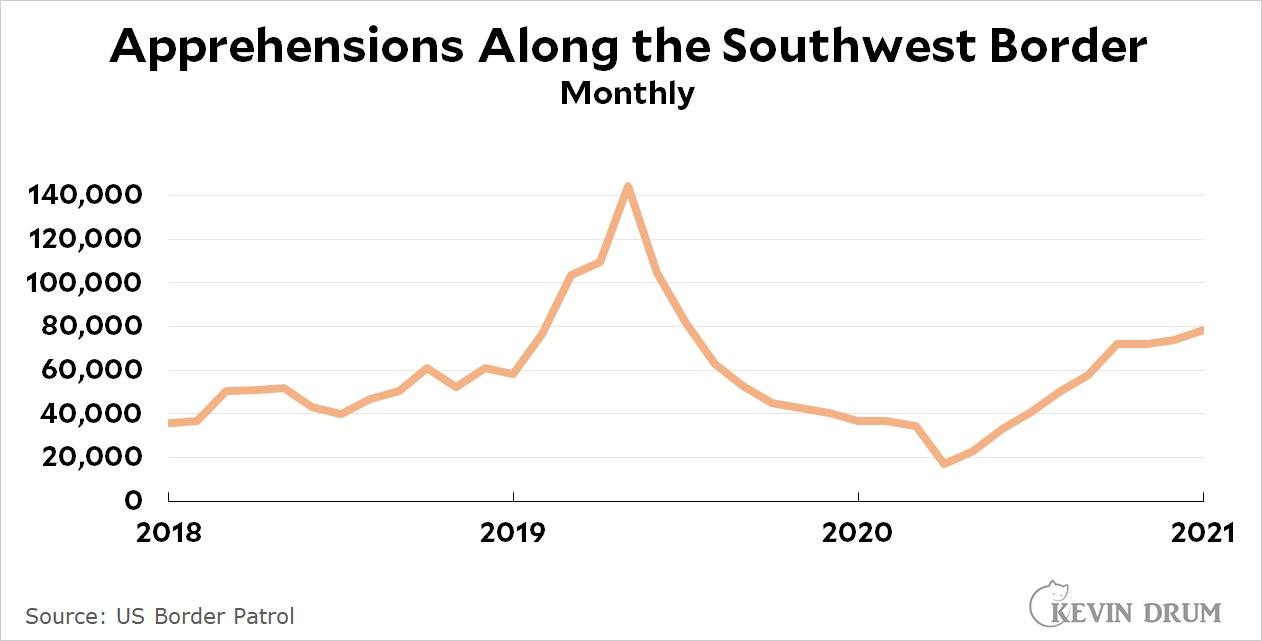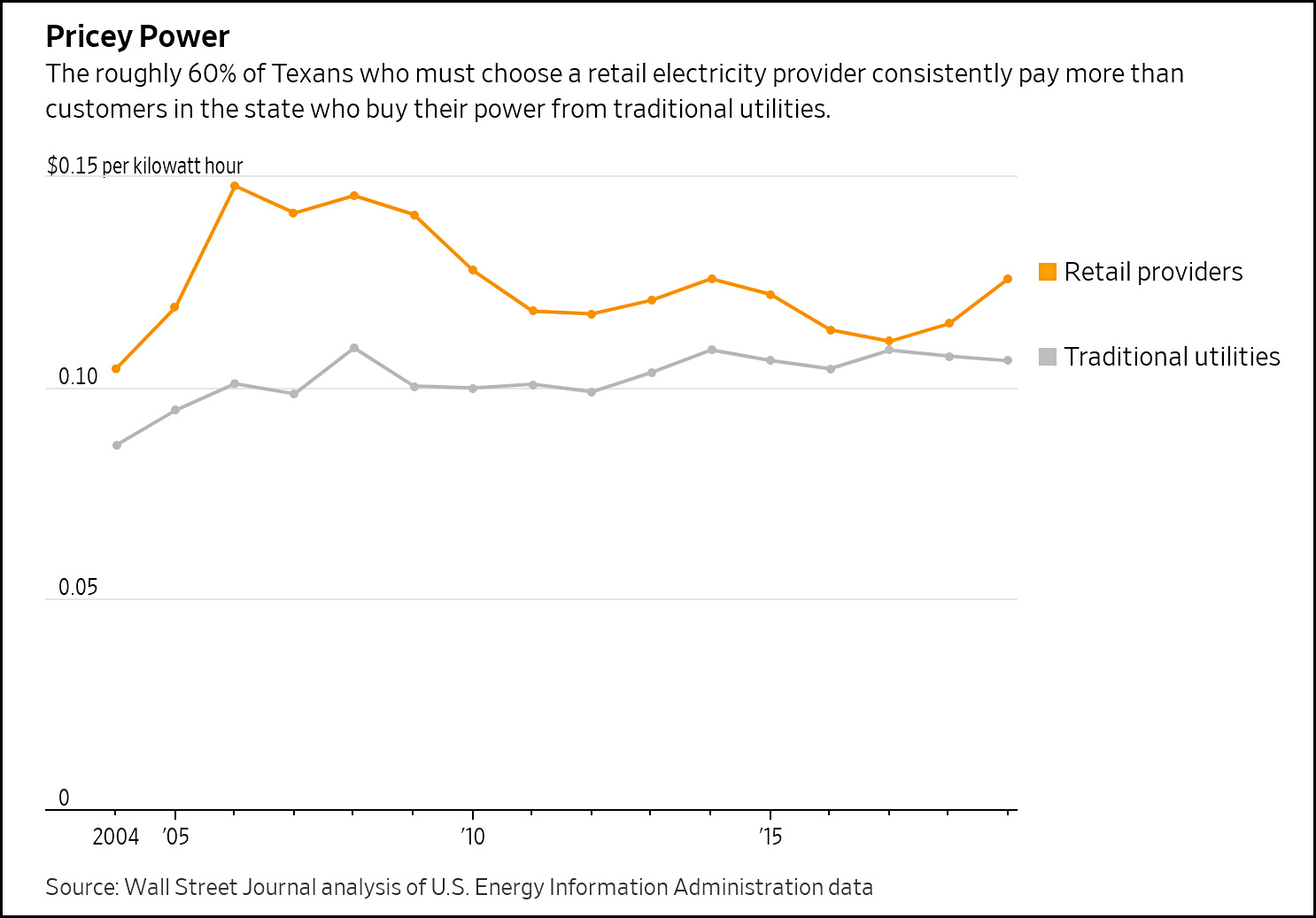A quick reminder. You've probably been hearing a lot about whether Democrats can eliminate the filibuster. Or what can be passed via reconciliation. Or the Byrd Rule. Or whether the Senate parliamentarian's rulings can be overturned by Kamala Harris in her role as president of the Senate.
If you're interested in the details of all these things, fine. If you're not, they all boil down to the same thing: Do Democrats have 50 votes to do what they want to do? That's it. It takes 50 votes (plus Harris) to kill the filibuster. It takes 50 votes to pass even a reconciliation bill. If Harris overrules the parliamentarian on a substantive point, you're left with a bill that still needs 50 votes. And there are exactly 50 Democrats in the Senate. If they lose even a single vote they can't pass anything—and there are at least a couple of Democrats who won't vote for a bill that undermines the parliamentarian.
This means that Democrats don't have 50 votes to kill the filibuster. They also don't have 50 votes to pass a stimulus bill under reconciliation rules unless they satisfy every single member of their caucus. Every. Single. Member.
This explains everything. Forget the details. Democrats need 60 votes for most things, but even for the few exceptions they still need 50 votes and they don't always have them. End of story.
UPDATE: I originally wrote that it takes 50 votes to overrule the parliamentarian. In practice, it takes only 40 votes. The text has been corrected.








